The Kathmandu Valley’s Artistic Heritage: A Legacy in Wood
Wooden statues maintain their crucial position throughout Tibetan Buddhist cultural and spiritual elements, serving as both religious objects and instructional tools for devotion and sacramental functions. The artwork has surpassed simple crafting to become a spiritual representation of mystical beliefs and deep, sacred meanings. Through the combination of wooden material being touched while displaying elaborate carving styles, Buddhist doctrines together with sacred stories, successfully reach both creators and observers. Nepal demonstrates exceptional artisanship together with its deep historical legacy and distinctive cultural amalgamation among other territories which contributed to this majestic religious creative tradition.
Tradition has revered Kathmandu Valley as a center of wood carving, which has nurtured innovations in art and sustained religious veneration for centuries. The Newar artisans from Nepalese communities designed sculptures that contain deep symbolism which serves both Tibetan Buddhist religious ceremonies and temple constructions. The article traces the development of Nepalese wooden sculptures from the Licchavi period through their impact on Tibetan art, which established links between human beings and divine beings. This article examines the historical development, religious importance, and sustained heritage of Nepalese wooden artworks that serve Tibetan Buddhism.

The Genesis of Wood Carving in Nepal
The wood carving art in Nepal extends its origin back to more than one thousand years. Secular artisans of early times used gauges, chisels, and knives to develop elaborate wood sculptures and architectural beauty. People in the Kathmandu Valley established the hub for wood carving art which resulted in temples and palaces receiving detailed wooden carvings that told stories from Hindu and Buddhist scripture. Wood artists employed these structures to honor devotion to spirituality while achieving artistic beauty through their creation.s
Culture and tradition consider wood as a material with the ability to present growth and survival while symbolizing existence. Many religious traditions see wood as a symbol of impermanence, so it serves perfectly as the material choice for monuments that demonstrate the fleeting quality of life. Numerous generations have allowed the Newar community to evolve its woodworking practice into its current perfected state. Various architectural elements in the Kathmandu Valley showcase exceptional craftsmanship because of their precise detailing in windows, struts, and tympanums. Woodlore forms a fundamental part of the Kathmandu linguistic origin as “Kasthmanadap” combines the Sanskrit terms kasta (wood) and mandapa (temple or hall), which means “temple made of wood.”
The Licchavi Period: Foundations of Artistic Excellence
During the Licchavi period spanning from 400 to 750 CE, Nepal experienced its most important artistic development. The construction of the Changu Narayan Temple displayed remarkable wooden artwork that demonstrated the artistic excellence of that era. The Licchavi period integrated the fundamental elements that later became typical for Nepalese wood carving during the following centuries. The famed Chinese traveler Wang Hsuan Tsang (643 AD) mentions of the Licchavi era’s magnificent woodworks and sculptures.
The Malla Dynasty: A Renaissance in Wood Carving
The Malla period (12th to 18th centuries), often denoted as the Golden Age of Sculpture and Art of Nepal, witnessed a renaissance in wood carving. Rulers of this era patronized both Hindu and Buddhist traditions, fostering an environment where art flourished. The sculptures from this era usually feature images of deities, demons, and animals carved onto tudals (support columns), as well as carved and lattice windows. The Indreshwar Mahadev Temple in Panauti, believed to date back to 1396 AD, stands as a testament to the era's architectural and artistic brilliance.

Nepalese Influence on Tibetan Buddhist Art
During the Malla period spanning from the 12th to 18th centuries, Nepalese wood carving thrived to such an extent that historians now recognize it as the Golden Age of Sculpture and Art of Nepal. During this period, royal patrons funded Hindu and Buddhist religious beliefs as they cultivated a setting that produced artistic excellence. The artistic productions from this period mainly depict divine beings alongside demonic figures and wildlife placed upon tudals (support columns) alongside shaped windows. Since 1396 the Panauti's Indreshwar Mahadev Temple has existed as cultural evidence of both ancient architectural creativity and artistic quality during that period.
The Iconographic Narratives in Carved Figures
The central components of the iconographic representation consist of Buddha and bodhisattvas. The makers create these representations with great attention to detail.:
-
Buddha Figures: Wooden Buddhist statues portray the Buddha through meditative postures which represent wisdom together with serenity and enlightenment. His peaceful expression, combined with particular hand gestures which are called mudras, transfers two primary meanings through peace-making and protection as well as the ending of human suffering.
Click Here To View Our Sakhyamuni Buddhi with Kirtimukha Carved Statue
-
Bodhisattvas: The depictions of Bodhisattvas show enlightened beings waiting to achieve their liberation through poses that express their compassionate nature. Viewers can explore the concepts of altruism, compassion, and universal interconnectedness because of these works' subtle facial expressions and dress details.
Protective Deities and Mythical Creatures
-
Guardians: The Hindu deities Garuda and Makara present themselves through dynamic expressions which defend sacred spaces from evil forces resulting in their furious powerful appearance. Hindu guardianship status represent the protective attributes of defenders who position themselves guardedly in sacred domains.
-
Mythical Elements: The artwork uses decorative serpentine shapes with mythical representations of holy beings to include mythological concepts that relate to common legendary stories. Visual symbols in this design portray the everlasting battle between good and evil entities together with natural divine elements.

Floral and Geometric Patterns
The background sections and border elements of sculptures display geometric design patterns that express the cosmic equilibrium in existence. Through their artistic elements, the artists construct representations of permanent order and transient aspects in material forms to spark deep contemplation about human existence:
-
Floral Motifs: Floral Motifs, such as the lotus flower, appear throughout the sculptures to symbolize purity, together with spiritual rebirth and enlightenment. The lotus arises from the polluted waters without contamination to show how spiritual growth is a clean separation from impure conditions.
-
Geometric Patterns: The background and borders of sculptures contain symmetric and repetitive patterns that mirror cosmic balance in the universe. The artistic elements depict order and transience in the material realm to promote meditative thoughts about the nature of existence
Techniques and Materials: The Artisan's Craft
Newari artisans conduct an extensive teaching program for wood carving which provides consecutive generation knowledge transfer about the craft. Wood selection by artists depends on product dimensions and design parameters while the artists make their choices of suitable wood. Newari artisans pick premium wood types Sal (Shorea robusta) and teak along with sandalwood because these tree species show both durability and desired pattern maintenance qualities.
As the selection process concludes, the Artists initiate wood transformation through carving to create religious sculptures.

The unique techniques used for carved structures follow an identical basic pattern:
-
Shaping the Form: Using gouges, the user carves away large wood sections with smooth curved blades to create the basic shape of the sculpture.
-
Mastering the Tools:
-
The precise edges of wooden artwork become possible through chisels which also establish functional structures.
-
Tools combining knives and saws cut through large portions of wood while working both alongside and across the wood fibers, but avoid slicing against them.
-
Bringing the Details to Life:
-
The Verner tool, together with Flutter, enables woodworkers to create deep grooves that enhance dimensional quality.
-
The v-tool produces delicate lines that complete elaborate decorative designs.
-
Refining the Surface:
-
Rasps achieve smooth finishes by using their toothed edges with sharp points on them.
-
The precise definition of deep folds and crevices relies on the use of rifflers.
-
Polishing the Sculpture: From coarse to fine abrasive paper, the artisan uses to produce a flesh-like natural luster on the sculpture's surface.
-
The Finishing Touch:
-
Wood protection comes from walnut or linseed oil applications, which deepen the wood tone while revealing subtle wood carvings.
-
The final procedure involves wax application to produce a smooth sheen before the statue can be appreciated for spiritual or artistic reasons.
-
Completion: Through patience along with mastery, the wooden figure emerges complete as an everlasting monument which reveals both the artisan's discipline and dedication.
The Role of Wooden Sculptures in Tibetan Buddhist Practice
Wooden sculptures at Tibetan Buddhist locations support several religious functions:

-
Objects of Veneration: Through placement on temple altars combined with domestic areas, people use wooden sculptures depicting the Buddha and his helpers, as well as deities, to ignite focus during meditation sessions and religious veneration. The wooden arts within Tibetan Buddhist spaces are thought to increase spiritual energy throughout the area.
-
Teaching Tools: Teaching Tools comprise wooden carvings that illustrate events from the Buddha's life, as well as important Buddhist teachings to aid practitioners in viewing difficult teachings and absorbing dharma concepts better.
-
Ritual Implements: Ritual Implements possess two functions since some pieces serve as sacred representations of divine energy, whereas others help perform tantric rituals and protect from negative forces by invoking blessings.
-
Sacred Presence: The devotion of craftsmen becomes a sacred element in each wooden piece as their natural warmth enhances its spiritual essence through their belief that their dedication exists within the wood.
-
Preserving Tradition: These sculptures have been transmitted across generations because they defend Tibetan Buddhist artistic and spiritual heritage which activates their religious and cultural identity.
Cultural Heritage Sites and the Protection of Wooden Sculptures
The intricate religious wooden sculptures in Nepal hold a revered place worldwide and reside inside UNESCO World Heritage Sites. Cultural heritage sites protect Nepal’s artistic heritage while maintaining an active tradition of wood carving, which flourishes today. Nepal's religious dimension finds its enrichment through wood-carved sculptures, altars and architectural details that exist within temples of the Kathmandu Valley as well as Bhaktapur and Patan.
Kathmandu Valley: A Hub for Sacred Wooden Carvings
Wooden sculpture experienced its heyday as an artistic practice throughout the Kathmandu Valley, which people frequently call the "temple city". The temple compound presents exquisite wooden pieces that depict both Buddhist and Hindu beliefs through artwork that exists on temple windows, along with struts and columns, as well as deities. The wooden sculptures function beyond artistic value because people use them as religious tools for meditation, spiritual activities, and worship. The major temples, including Swayambhunath (the Monkey Temple), Pashupatinath, and Boudhanath, display wooden sculptures that have survived centuries of worship.
Wood forms an essential aspect of Durbar Square buildings in all three locations of Kathmandu, Patan, and Bhaktapur by incorporating beautiful carved wooden window frames, entry gates and supporting columns. These sites demonstrate terrific religious and historical significance because they bridge artistic accomplishments with spiritual values and master craftsmanship.

Preservation and Challenges in the Modern Era
-
Environmental Factors: Wooden sculptures manifest high sensitivity to moisture, along with pests and temperature variations, which result in decay and structural damage. The improper conservation techniques at heritage sites endanger cultural artifacts since they cannot protect objects effectively enough.
-
Urbanization and Modernization: Modernization, together with urban development, threatens the existence of historical wood-carving areas because of infrastructure development. Contemporary material, especially concrete and metal, together with their newfound popularity, has reduced the need for wooden craftsmanship.
-
Cultural Erosion and Declining Interest: Young artisans avoid traditional carving techniques because modern career paths grant them better financial advantages. Timeless skills are in danger of extinction since knowledgeable transmission stops.
-
Preservation Efforts and Future Prospects: Future prospects for wood carving include organizations dedicated to site restoration plus ancient technique documentation alongside cultural education aimed at reviving global interest in Nepalese wood carving. New market demand for Nepalese craftsmanship demonstrates a positive outlook for preserving this historical art heritage.
Featured Wooden Sculptures in Evamratna
Evamratna unites traditional heritage with contemporary times through wooden sculptures made by hand and sourced from Nepali Buddhist culture. The master craftsmen of multiple generations received the Newar artisan techniques that create every piece in the Evamratna collection.
Signature Designs and Craftsmanship
Wooden sculptures at Evamratna receive recognition because of their advanced details that speak through iconic imagery. The collection features:
-
Serene Buddha Statues: Serene Buddha Statues from this collection reproduce Buddhist tranquility through their calming design to bring mindfulness to the viewer.
-
Elaborate Bodhisattva Figures: These figures display detailed interpretations of enlightenment beings through traditional postures while using symbolic art elements.
-
Guardian Deities and Mythical Protectors: The sculptures serve dual purposes in Nepali art as they function as mythical protectors while carrying tremendous decorative value.
The artistic traditions from previous generations appear in the sculptural pieces, while the works demonstrate traditional architectural principles of Nepalese temples.
Click Here To View Our Wooden Sculpture Collection
Bridging Heritage and Modern Aesthetics
Through its collection, Evamratna moves beyond previous appreciation levels by working to promote traditional art traditions. The artists at Evamratna bridge traditional methods with modern aesthetic standards to create artworks that welcome supporters from both modern art circles and Buddhist worshiping communities. Multiple factors work together to ensure longevity for every sculpture, especially handpicked sustainable high-quality wood combined with authentic traditional finishing procedures, which protect Nepali craftsmanship legacies for future generations.
A Window into Nepal's Cultural Soul
Through their wooden sculptures, Evamratna enables all collectors, art enthusiasts, and spiritual seekers to merge Nepalese cultural values within their home environments. People keep these works of art at their homes as well as their offices and places of worship, because they develop profound emotional bonds with Nepalese religious heritage and artistic excellence. Each individual art piece unveils a story that unites spiritual devotion to excellent craftsmanship and enduring Nepali Buddhist artistic value.
Conclusion: Embracing a Living Tradition
Wooden Nepalese sculptures from Tibetan Buddhism showcase the unbreakable connection between sacred art creation, religious rituals and traditional values of a culture. Wooden creations serve purposes above ornamentation because they act as sacred vessels that guard holy sites while displaying Buddhist teachings through artistic forms. From the Licchavi period through the Malla dynasty, Nepalese craftsmen perfected their carving methods for the religious and residential decoration of temples and monasteries. Today, wood carving traditions face two primary threats from the combination of modern development and ecological dangers, as well as reduced interest from young people.
Proficient artisan groups alongside cultural organizations and the Evamratna initiative actively struggle to protect and promote this sacred art form despite its current obstacles. The art of wood sculpture through spiritual symbolism and expert technical execution keeps drawing admiration from devotees of religion as well as art enthusiasts. Support for Nepalese wood carving helps maintain an ancient artistic heritage that links historical eras to modern times, thus ensuring its spiritual value continues to bind new and old times.





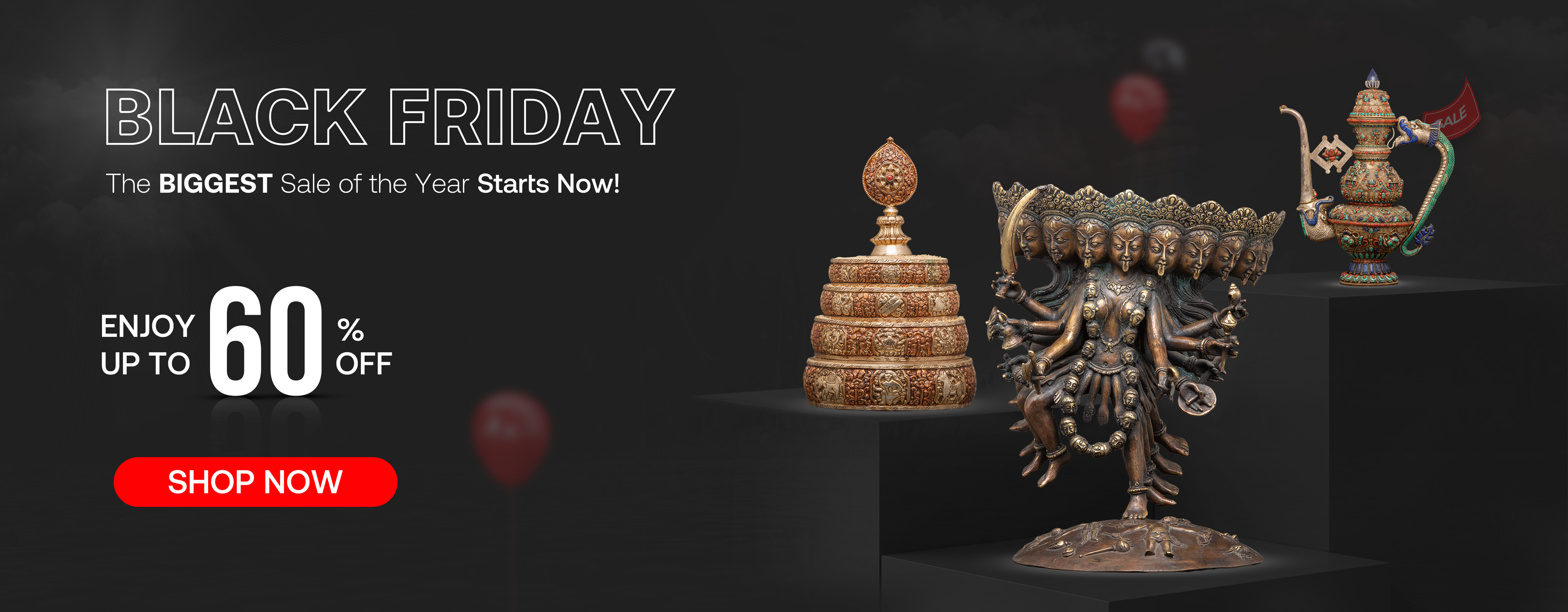




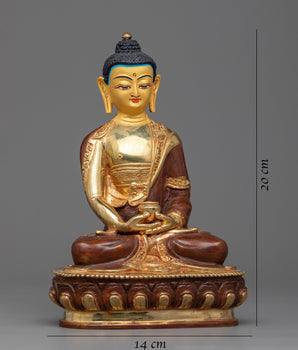
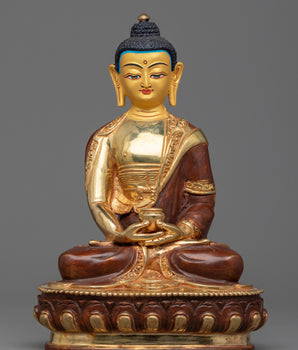


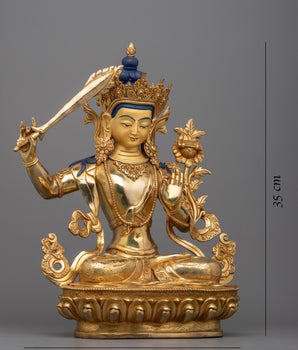
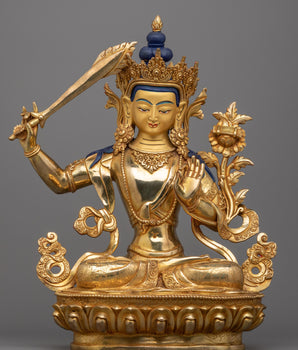
Thank you so much for this beautifully written deep dive into the legacy of wooden sculptures in Tibetan Buddhism. Your article not only highlights Nepal’s rich artistic heritage, but also connects it to a broader cultural and spiritual context in a way that feels both scholarly and heartfelt.
I especially appreciated how you explained the symbolism behind these sculptures, and how their craftsmanship reflects centuries-old traditions. It truly deepened my understanding of their religious, artistic, and historical significance.
Reading this has given me a renewed appreciation for Nepal’s artistry, and I feel inspired to learn more about these practices and perhaps support or preserve this heritage.
Thank you again for sharing such a meaningful and well-researched piece. I look forward to reading more from your blog.
With gratitude,
Antique Buddhas
https://www.antique-buddhas.com